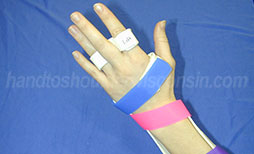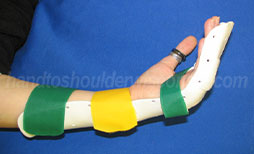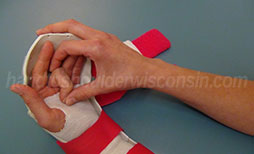The team of orthopedic specialists at Hand to Shoulder Center of Wisconsin is skilled in diagnosing and treating extensor and flexor tendon injuries. If you’re experiencing symptoms of a finger tendon injury, our orthopedic doctors and occupational and physical therapists are here to help you. Contact Hand to Shoulder Center of Wisconsin in Appleton or Green Bay.
Types of Finger Tendon Injuries – Extensor and Flexor
Tendons are rope-like tissue that connects muscle to bone. The fingers have extensor and flexor tendons to guide movement. The finger flexor tendons originate in the forearm region and pass through the carpal tunnel region of the wrist. These tendons travel into each finger sliding through tunnels called tendon sheaths. The finger flexor tendons are located on the palm-side of the hands and the extensor tendons are on the top side dorsum. When the finger flexors contract, they pull on the bones allowing the fingers and thumb to bend into a fist. The finger extensor tendons aid in straightening the finger, to release from grasping.
Accidents involving lacerations can cut finger tendons causing a loss of motion. Lacerations to tendons can also involve nerves and blood vessels to the hand. Such injuries often require repair of tendons, nerves, and/or blood vessels.
Causes of Tendon Injuries
Tendon injuries can result from accidents at home, work or play. A flexor tendon injury can happen with a significant injury or strain to the hand, wrist or arm. It commonly occurs from a laceration or sporting activity. Athletes in vigorous sports such as football and wrestling are also at a higher risk for a tendon rupture. A “jersey finger” is a common finger tendon injury that typically occurs when one player grabs another player’s jersey. The finger gets caught and pulled causing the tendon to tear from the bone. Sometimes flexor tendon injuries can occur from health conditions such as rheumatoid arthritis or gout. These conditions can weaken the tendons and make them prone to rupture, even without a specific injury.
Signs of a Tendon Injury
Tendon lacerations or ruptures present with an inability to independently bend or straighten one or more joints. Pain when bending or straightening finger may be present with the loss of mobility.
Diagnosis and Treatment

Figure 1: Extensor and flexor tendon fabricated splints
With a finger tendon injury, it is essential to seek professional care. If left untreated, loss of strength, mobility and function can occur along with the potential to develop a permanent deformity. At Hand to Shoulder Center of Wisconsin, a thorough evaluation of the injury is performed by a sub-specialty trained orthopedic surgeon specializing in hand and upper extremity injuries.
Tendon injury treatment typically involves surgery and should be treated surgically within 7-10 days of the initial injury to encourage the best functional outcome possible.

Figure 2: Extensor and flexor tendon fabricated splints
Finger tendon surgery focuses on reconnecting the damaged tendon ends together. The damaged tendon along with blood vessels and nerves can be repaired.
Extensor and flexor tendon repair surgery is typically done as an outpatient procedure, enabling the patient to return home after the procedure.

Figure 3: Therapy exercises are performed to promote range of motion
Hand therapy sessions will begin soon after surgery. Our licensed occupational and physical therapists at Hand to Shoulder Center will fabricate a custom splint to protect the tendon repair as well as provide specific exercises to focus on regaining active range of motion and function (Fig. 1-3).
Recovery from tendon injuries is an involved process and generally takes 3-4 months minimum for return to activities.